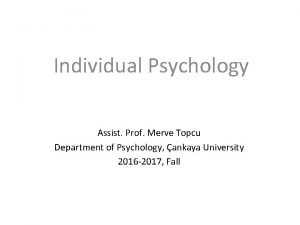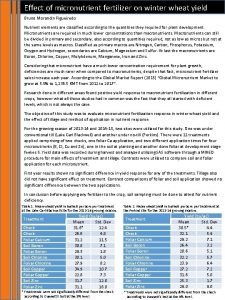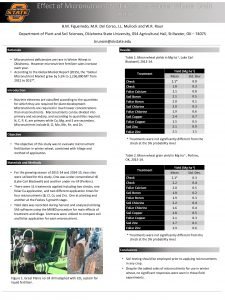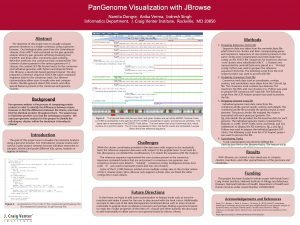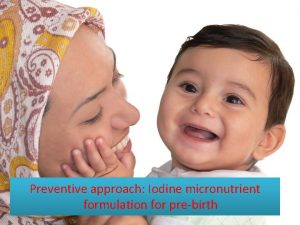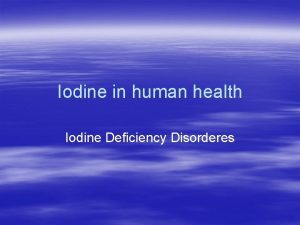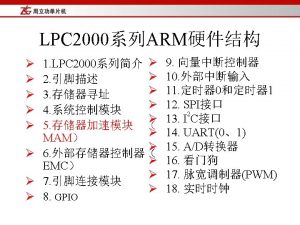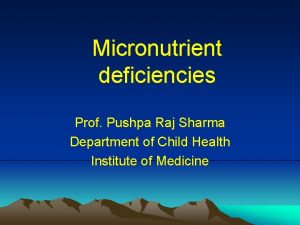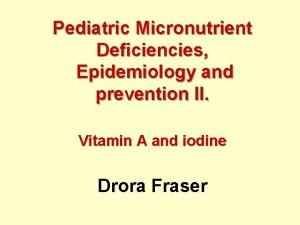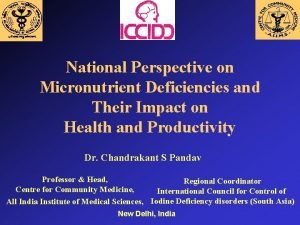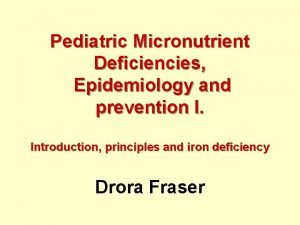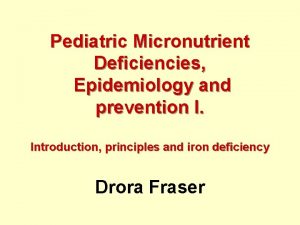Iodine MicroNutrient Deficiencies of Iodine Mam Namita Iodine










- Slides: 10

Iodine Micro-Nutrient Deficiencies of Iodine Mam Namita

Iodine Deficiency Disorder • Iodine deficiency is the world’s most prevalent, yet easily preventable, cause of brain damage. Today we are on the verge of eliminating it – an achievement that will be hailed as a major public health triumph that ranks with getting rid of smallpox and poliomyelitis. • Iodine deficiency is one of the main cause of impaired cognitive development in children. • 54 countries are still iodine-deficient. • Efforts are required to strengthen sustainable salt iodization programmes.

Incidence • IDD is a major global public health problem. About 1. 5 billion population of the world are at the risk of IDD. Out of this more than 200 million are in India, A total of 68 per cent of the households globally have an access to iodised salt, this achievement is a singular feat in itself. In the developed countries, the problem of IDD has been virtually eliminated through implementation of effective control measures sueh as iodine fortification of bread, salt etc. , but it continues to be a major nutritional problem in Latin America, Africa and Asia.

Environmental Factors • lodine deficiency is a disease of the soil where the environment deficiency results in the manifestation of iodine deficiency disorders in human beings and livestock population. lodine deficiency is likely to occur in all elevated regions subject to higher rainfall with run-off into rivers. High rainfall, snow and flooding increase the loss of soil iodine which has often been already denuded by past glaciation. This causes the low iodine content of food for man and animals.

Spectrum of Iodine Deficiency Disorder • IDD covers a myriad consequences of iodine deficiency at all stages of human growth and development-from foetus, neonate, childhood, adolescence and adulthood. Depending on the stage of development, the iodine deficiency leads to a variety of disorders. Except certain types of goitre, lodine Deficiency Disorders are permanent and incurable.

Still Birth • In the human, thyroid and pituitary are developed by the end of the first 12 weeks of gestation and the hypothalamus develops from 10 th to 30 th weeks. Between 18 and 22 weeks TSH can be detected in the blood so that the pituitary can stimulate thyroid. Then there is a size in T. T, remains low because the 5 deiodinase enzyme removes the inner-ring 5 iodine atom to form reverse T, which has no hormonal activity. Just before birth, there is a decline in this enzyme with a rise in 5 deiodinase enzyme acting on the outer ring so the biologically active T rises rapidly and reverse T, falls. This change prepares the organism for the transition from intrauterine to extrauterine life. Failure of this conversion to produce sufficient T, in iodine deficiency may be a factor in the stillbirths that occur as part of the spectrum of severe IDD.

Goitre • Goitre is defined as non-neoplastic (tumour) noninflammatory and non-toxic enlargement of thyroid gland. The enlargement is apparently a compensatory adaptation to lack of iodine required for the synthesis of thyroid hormones. The direct stimulus of the enlargement is an abnormally high level of TSH, itself brought about by low plasma levels of thyroid hormones. The excessive TSH causes an increase in both the number and size of the cells of the thyroid gland.

Goitre Simple goitre is a painless condition but if uncorrected it can lead to pressure on the trachea, which may cause difficulty in breathing. Administration of appropriate doses of iodine results slow reduction in the size of the thyroid gland. The prevalence of goitre is generally more among adolescents, young adults and schoolage children. More females are affected than males. Figure shows a woman with goitre.

Hypothyroidism • This is characterised by coarse and dry skin, husky voice and delayed tendon reflexes. Low serum T 4, and normal T 3, and elevated TSH levels are found. This condition is common among adults. Recent studies show that iodine deficiency or mild maternal hypothyroidism can affect neuropsychological development in children.

Thank You

